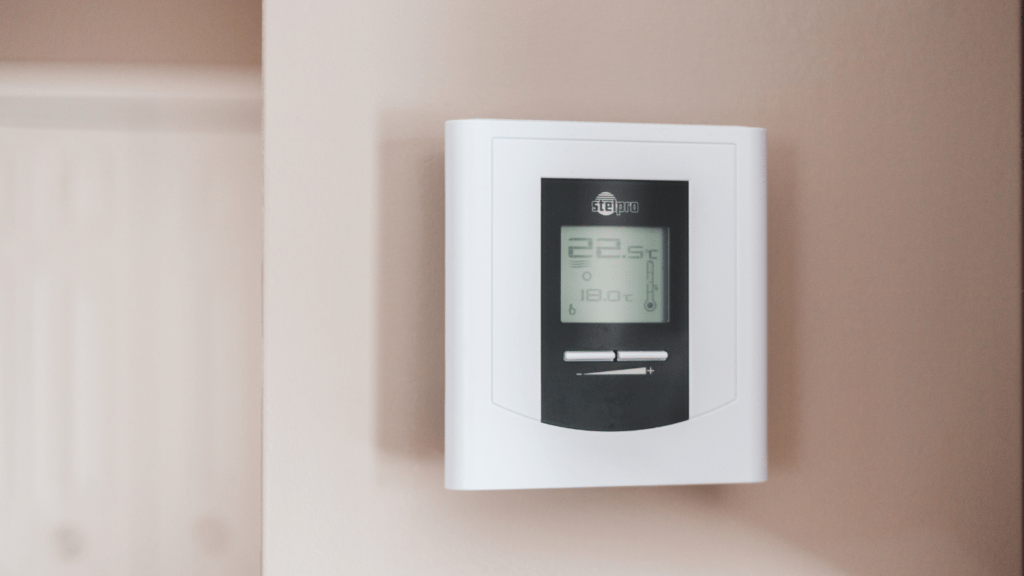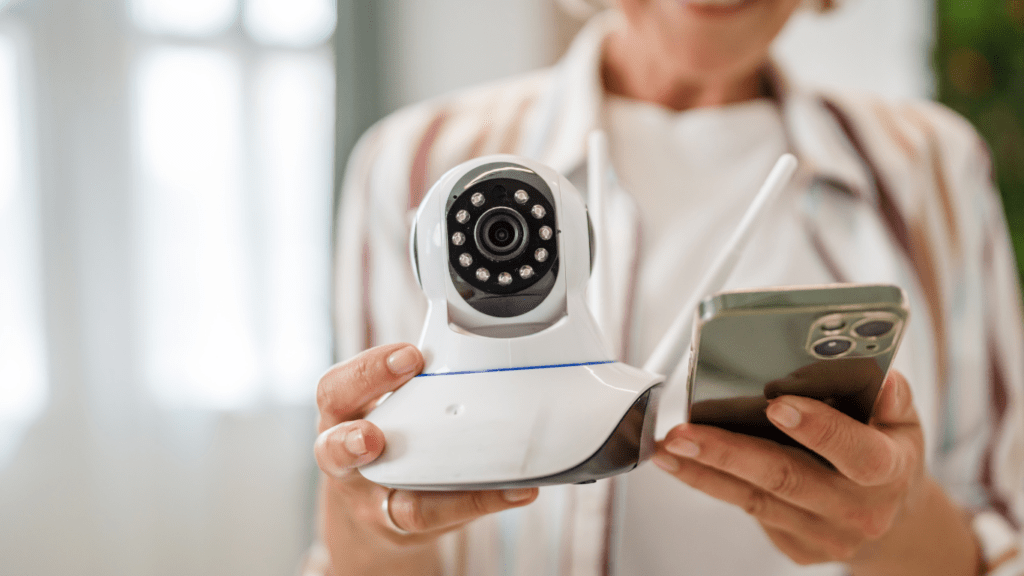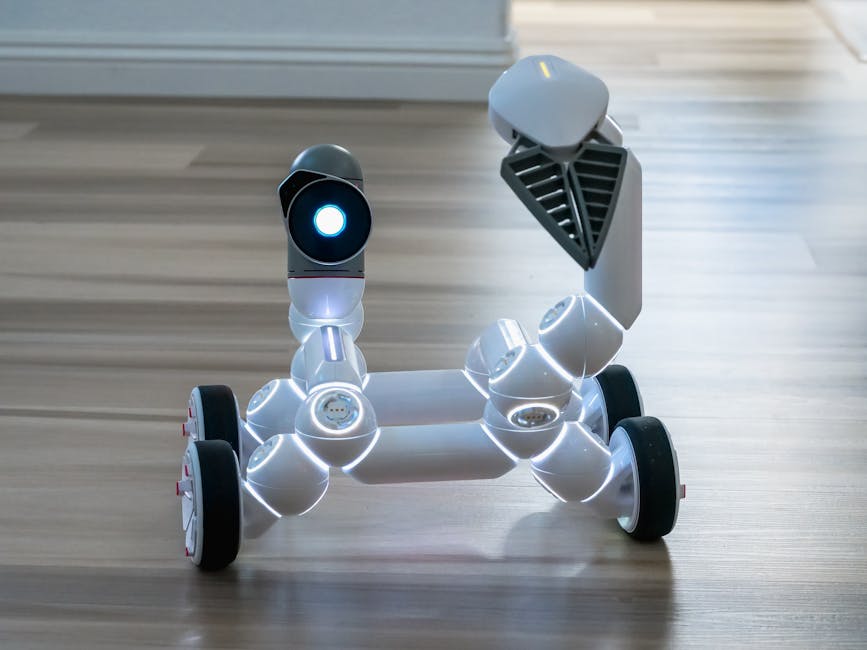What Are Smart Thermostats?
Smart thermostats are advanced devices designed to optimize home temperature control. Unlike traditional thermostats, these innovative gadgets connect to Wi-Fi, allowing remote management through smartphones, tablets, or computers. They analyze user behavior patterns and adjust settings automatically to enhance comfort and efficiency.
The most compelling feature is their learning capability. Smart thermostats gather data on daily routines and adjust temperatures based on occupancy and preferences. For example, if occupants usually leave home at 8 am, the thermostat reduces heating or cooling, saving energy during unoccupied hours.
Integration with other smart home devices is another advantage. These thermostats can sync with systems like Amazon Alexa or Google Home, enabling voice commands for temperature adjustments. This connectivity streamlines home automation, making it convenient and energy-efficient.
Additionally, smart thermostats offer real-time monitoring of energy usage. They provide detailed reports on consumption patterns, helping identify opportunities for cost savings. For instance, you might see a spike in usage during evenings and choose to adjust settings accordingly.
Energy providers often support these devices, offering rebates and incentives to encourage their adoption. Some utility companies provide discounts on purchasing smart thermostats, making them an accessible investment for long-term savings.
Smart thermostats represent a blend of convenience, energy efficiency, and cost savings. They adjust to user habits, integrate seamlessly with other devices, and provide insights into energy consumption, all contributing to a more sustainable and economical home environment.
Key Features of Smart Thermostats
Smart thermostats offer a variety of advanced features that make them valuable for saving energy and money. Here, I’ll discuss some key features that set these devices apart.
Remote Control
I can control my smart thermostat from anywhere using my smartphone, tablet, or computer. This remote access allows me to adjust the temperature without being physically present, which is particularly useful when I’m traveling or away from home for extended periods.
Learning Capabilities
My smart thermostat learns my daily routines and temperature preferences over time. It automatically adjusts settings based on when I’m home or away, ensuring optimal comfort while maximizing energy efficiency. This adaptive feature reduces the need for manual adjustments and helps lower energy consumption.
Energy Usage Reports
Smart thermostats provide detailed energy usage reports, available through the device’s app or web interface. These reports break down how much energy my heating and cooling systems use, highlight patterns, and suggest ways to save more. This data-driven approach helps me make informed decisions to reduce my energy bills further.
Integration with Other Devices
These devices can integrate seamlessly with other smart home systems. I can use voice commands through platforms like Amazon Alexa or Google Home to change the temperature. Additionally, they can work with other smart appliances for more comprehensive home automation. This interconnectivity streamlines home management and enhances overall efficiency.
Smart thermostats combine remote control, learning capabilities, energy usage reports, and device integration to provide a comprehensive approach to home temperature management.
Benefits of Using Smart Thermostats
Smart thermostats offer numerous advantages, especially when it comes to energy and cost savings. They ensure an efficient, comfortable home environment through intelligent controls and automation.
Energy Savings
Smart thermostats significantly reduce energy consumption. Devices like the Nest Learning Thermostat save up to 12% on heating and 15% on cooling. They adjust temperature settings based on occupancy and user behavior patterns, minimizing energy waste. For instance, these devices lower temperatures during unoccupied hours, preserving energy when it’s not needed.
Cost Efficiency
By reducing energy usage, smart thermostats lead to lower utility bills. According to Energy Star, homes with smart thermostats save about $180 annually. Manufacturers like Ecobee and Honeywell Home often provide detailed energy usage reports, helping users identify further cost-saving opportunities. Additionally, many energy providers offer rebates for purchasing and installing these devices, enhancing their overall cost efficiency.
Enhanced Comfort
Smart thermostats also enhance home comfort. They adapt to user preferences, maintaining optimal temperatures throughout the day. Devices such as the Google Nest Thermostat incorporate advanced sensors to detect humidity and ambient temperature, adjusting settings to maintain comfort. Integration with voice-activated systems like Amazon’s Alexa or Google Assistant allows for easy, hands-free adjustments, making it even more convenient to manage home temperatures.
Popular Smart Thermostat Brands

Several brands dominate the smart thermostat market, each offering unique features and benefits. Below, I highlight three prominent ones.
Nest
Nest, a Google-owned brand, is well-known for its learning algorithms. The Nest Learning Thermostat adjusts quickly to my schedule, learning my routine in just a week. Its Farsight feature lights up when I enter the room, displaying useful information. Integrating seamlessly with Google Assistant, the Nest Thermostat provides hands-free control. The device can lower heating by 12% and cooling by 15%, translating into significant annual savings.
Ecobee
Ecobee stands out for its room sensor technology. The Ecobee SmartThermostat comes with a SmartSensor that detects occupancy and temperature, adjusting settings to ensure comfort in occupied rooms. This feature helps in avoiding hotspots and cold spots in my home. Compatible with:
- Amazon Alexa,
- Apple HomeKit
- Google Assistant
it offers versatile control options. Ecobee claims energy savings of up to 23% annually by optimizing heating and cooling systems.
Honeywell
Honeywell’s smart thermostats focus on user-friendly designs and reliable performance. The Honeywell Home T9 Smart Thermostat includes room sensors to monitor and manage temperatures in multiple zones. Its intuitive app interface lets me adjust settings remotely. Integration with voice assistants like Amazon Alexa and Google Home enhances user experience. Honeywell’s thermostats support various HVAC systems, making them versatile for different home setups, leading to consistent energy savings.
Installation and Setup
Installing a smart thermostat can be straightforward or complex, depending on the device and home setup. Here, I’ll break down DIY and professional installation options to help you make an informed decision.
DIY Installation
Self-installation is feasible for many smart thermostat models. Most manufacturers offer detailed guides and video tutorials to simplify the process. Models like the Nest Learning Thermostat and Ecobee include step-by-step instructions.
- Turn off power: Before starting, I always shut off the power to my heating and cooling systems at the circuit breaker to avoid electrical hazards.
- Remove old thermostat: I then remove the existing thermostat, labeling the wires as I disconnect them to ensure proper reconnection.
- Install the base: Mounting the new thermostat’s base plate on the wall comes next, using the provided hardware.
- Connect wires: Reconnecting the labeled wires to the new thermostat follows, typically using standardized color codes.
- Attach the display: I snap the thermostat’s display unit onto the base.
- Turn on power: After reattaching the thermostat, I restore power at the circuit breaker.
- Set up via app: Finally, I use the manufacturer’s app for initial setup and calibration, ensuring everything operates correctly.
Most installations take under an hour if the wiring is compatible and no complex adjustments are needed.
Professional Installation
For those uncomfortable with electrical work or possessing complex HVAC systems, hiring a professional installer is a reliable option. Professional installation ensures accuracy and compliance with local electrical codes, minimizing potential risks.
- Consultation: I schedule a consultation with a certified HVAC technician to assess my system’s compatibility with the chosen thermostat.
- Appointment: On the installation day, the technician arrives with specialized tools and expertise to complete the job efficiently.
- Testing: Post-installation, the technician tests the thermostat to ensure it’s communicating correctly with the HVAC system and all components are functioning.
- Guidance: The technician usually provides a tutorial on using the thermostat and setting it up for optimal performance.
Professional service costs vary but usually range from $100 to $250, depending on the complexity and location.
Both DIY and professional installations offer paths to enjoying the benefits of smart thermostats, helping you save energy and money efficiently.
User Experiences and Reviews
User experiences with smart thermostats vary widely, reflecting the benefits and challenges these devices present. Below, I delve into both positive feedback and common complaints to provide a balanced view of what users encounter.
Positive Feedback
Many users share positive experiences with smart thermostats. They often praise the energy savings achieved, as devices like the Nest Learning Thermostat can save up to 15% on cooling and 12% on heating costs annually. Homeowners appreciate the convenience of controlling their thermostats remotely via smartphone apps, enhancing comfort and efficiency. Users also commend the integration with other smart home devices, allowing seamless voice control through systems like Amazon Alexa or Google Home.
Another frequent point of praise is the detailed energy reports provided by these devices. These reports help users track their energy consumption and identify areas for further savings. For example, users of the Ecobee thermostat highlight how its room sensors and occupancy detection contribute to optimal temperature control, leading to increased comfort and reduced energy waste.
Common Complaints
Despite the many advantages, some users report issues with smart thermostats. A common complaint involves the initial setup process. Users sometimes struggle with wiring compatibility and the complexity of integrating the thermostat with their existing HVAC system. In cases where professional installation is necessary, the cost can range from $100 to $250, which adds to the overall investment.
Another frequent issue is connectivity problems. Smart thermostats rely on Wi-Fi, and any disruption in the network can affect their performance. Users have reported instances where the thermostat fails to adjust temperatures due to lost internet connection, causing frustration. Additionally, some users find the learning algorithms take time to accurately adapt to their schedules and preferences, leading to initial periods of discomfort.



 Smart Home Technology Consultant
Meagan Kanedooray serves as Luxe House Maker’s smart home technology consultant, with extensive experience in integrating advanced tech into luxury homes. Specializing in home automation, security systems, and energy-efficient solutions, Meagan helps readers transform their living spaces into seamless, tech-enabled environments. Her expertise in cutting-edge technologies ensures that Luxe House Maker’s audience stays informed about the latest innovations that enhance convenience, safety, and sustainability in luxury living. Meagan’s deep understanding of smart home trends makes her an invaluable resource for those looking to elevate their homes with the latest advancements in technology.
Smart Home Technology Consultant
Meagan Kanedooray serves as Luxe House Maker’s smart home technology consultant, with extensive experience in integrating advanced tech into luxury homes. Specializing in home automation, security systems, and energy-efficient solutions, Meagan helps readers transform their living spaces into seamless, tech-enabled environments. Her expertise in cutting-edge technologies ensures that Luxe House Maker’s audience stays informed about the latest innovations that enhance convenience, safety, and sustainability in luxury living. Meagan’s deep understanding of smart home trends makes her an invaluable resource for those looking to elevate their homes with the latest advancements in technology.
